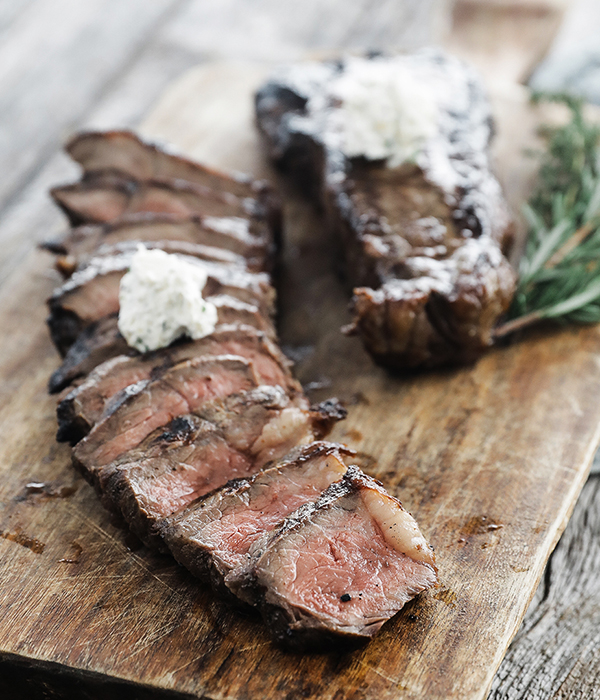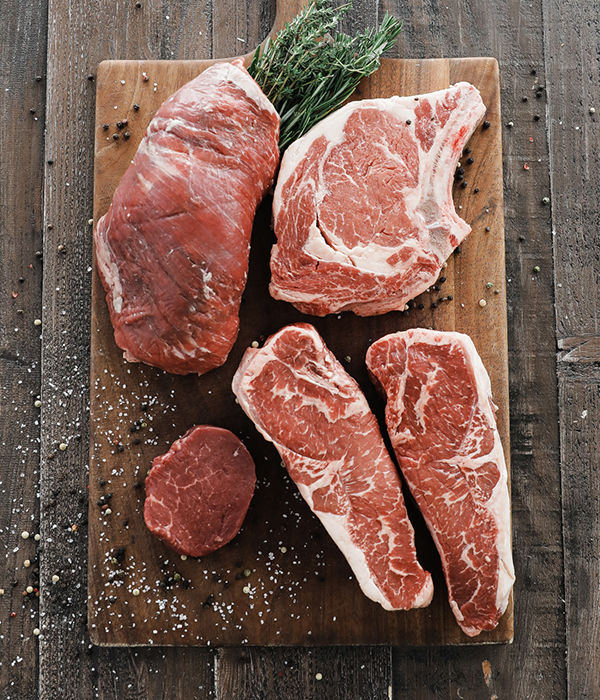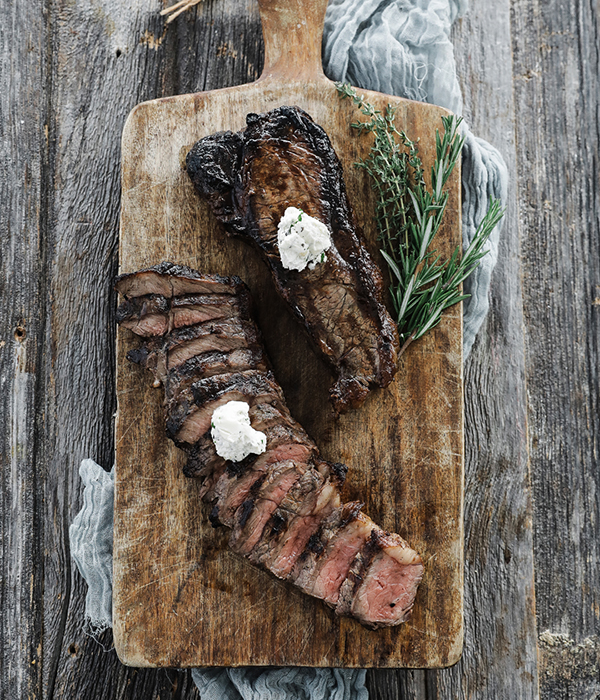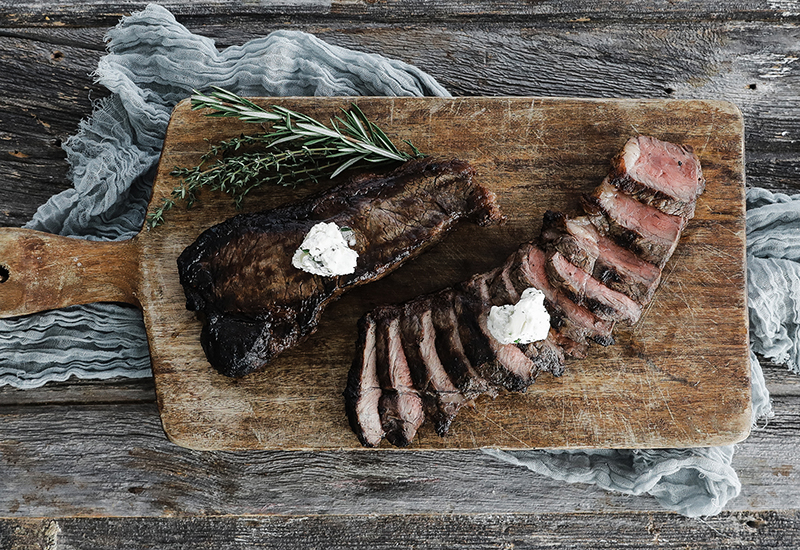Steak 101: Tips & Tricks for Picking and Preparing the Perfect Steak
Recipe, video and photography provided by Heinen’s partner, Chef Billy Parisi.
Choosing the right cut of meat from the meat counter can sometimes be intimidating. I’m going to show you what I look for in each cut to make the process of picking and preparing steak as easy as possible.
Let me start by saying that the butchers at Heinen’s are fantastic and incredibly knowledgeable. If you have questions regarding any protein, I’m certain that they will have the correct answers for you. With that being said, I want to show you what I look for when I browse the meat case at the grocery store.

Cuts of Steak
There is a myriad of delicious cuts of steak out there to choose from depending upon recipe and budget. Here are some of my favorite cuts of steak from most expensive to cheapest and with some meal suggestions.
Filet Mignon – Pan seared or grilled and served with herb butter or a sauce.
Ribeye – Slow roasted in the oven for prime rib or pan-seared or grilled and served with herb butter or sauce.
New York Strip – Pan-seared or grilled and served with herb butter or sauce.
Top Sirloin – Pan-seared or grilled and served with herb butter or sauce.
Flank Steak – Very quickly pan-seared or grilled and served in tacos or other traditional Latin recipes.
Skirt Steak – Very quickly pan-seared or grilled and served in tacos or other traditional Latin recipes.
Top Round – Slow cooked in a slow cooker or braised with stock and vegetables for a long period of time and served as a traditional roast.
Bottom Round – Slow cooked in a slow cooker or braised with stock and vegetables for a long period of time and served as a traditional roast.
Chuck Roast – Slow cooked in a slow cooker or braised with stock and vegetables for a long period of time and served as a traditional roast.
 In addition, a specific cut could determine what you are making. If I wanted a simple, elegant dinner with a tender piece of grilled steak, I would most likely choose a filet mignon or a ribeye. On the contrary, if I wanted a slow-cooked meal where the beef easily shreds apart, I may look to a top round or a chuck roast.
In addition, a specific cut could determine what you are making. If I wanted a simple, elegant dinner with a tender piece of grilled steak, I would most likely choose a filet mignon or a ribeye. On the contrary, if I wanted a slow-cooked meal where the beef easily shreds apart, I may look to a top round or a chuck roast.
What to Look for When Choosing a Steak
There are several things to know when buying steak, but these are the most important.
- Color – To ensure the freshness of a steak, it should be bright red on all sides.
- Marbling – These are the little fat lines that run through a steak and determine the grade and essentially the flavor. Remember just like I always say, fat equals flavor.
- Bone-in or Out – Bone-in can mean more flavor, but less meat and more expensive.
- Price – Obviously this is a big factor in determining whether or not you can purchase it.
- Grade – The grade of steak is determined by the cow’s diet, the amount of marbling and a few other factors. The highest grade of steak is U.S. Prime followed by U.S. Choice. The lowest grade of steak is U.S. Select. Heinen’s sources nothing lower than U.S. Choice.
How to Prepare Steak
There are several different methods that can be used when cooking steak. A lot of this will depend on your personal preference and what’s available. For example, nobody likes to grill outside when it is pouring rain, so maybe broiled is better.
I’m a huge fan of pan-searing, grilling, broiling or sous vide. These are hands down the most popular ways to prepare steak and often render the most flavor.
Cooking Temperatures
Cooking steak can sometimes be a little nerve-wracking since so many people get nervous that they will overcook their cut. My go-to plan is to always have a quick read thermometer handy to test the inside of each steak to know the exact temperature.
There are a few things to look out for when cooking steak and that is to account for carry-over cooking. This occurs when you remove the steak from the cooking surface and set it to the side and the internal temperature rises 3-7 degrees. You will have to remember this when desiring a specific internal temperature.
Here is a list of temperatures for any cut of meat.
- 120° to 125° F – Rare
- 125° to 130° F – Medium-Rare
- 135° to 140° F – Medium
- 145° to 155° F – Medium-Well
- 165° F and above – Well Done
The last thing I’ll remind you to do is to let your steak rest. Once it is done cooking let it sit on a plate or a cutting board for 2-3 minutes to allow all of the delicious juices to soak back in making it more tender and more delicious.
Happy steak night!




